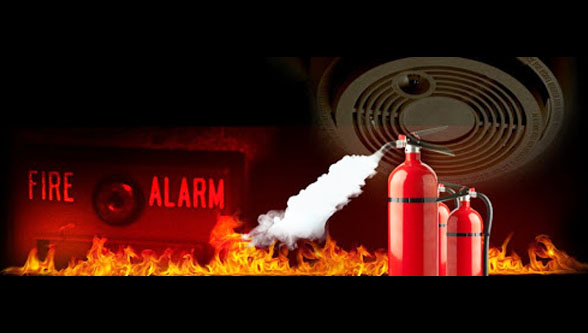Q. What are the criteria and considerations while choosing fire safety products and solutions?
When it comes to Fire safety, there are two criteria that needs considerations, one if any product or solution is intended for Fire prevention or second if it’s for Fire protection. Many users or even consultants focus more on Fire protection measures but ignore on prevention fronts. Fire codes and standards plays vital role in first identifying the risk and then designing the adequate fire protection/detection measures. In India National Building Code 2016 Part 4 is the most acceptable building code available for us to adopt the basic fire measures following rulebook.
Based on the code guidelines, engineer can then design and engineer a required system or equipment meeting the objectives. It is extremely important to understand the role of Codes and Engineering before installing the systems or equipment in your facility. The systems or equipment if installed at your facility, not adhering to any codes and standards and or not engineered it, may fail to provide adequate protection in real fire emergency.
Just to save the design cost by hiring independent engineering professionals, many users don’t follow the best practice and get the fire systems and equipment installed looking at the fancy broachers given by selling agents. This is a trap and will ultimately doesn’t help in fulfilling the fire safety objectives. One must understand the application before usage and selection of fire safety equipment. It is also equally important that, equipment that being used for specific application must be tested by third-party laboratories so user must see that every fire safety system and or equipment must be “listed and approved”.
Q. How have fire safety solutions upgraded over the years?
Currently, the fire safety solutions are modern, effective and more responsive because of the technological change and extensive product research. Today, people want to use technology to reduce cost and time. Also the products are more integrated, networkable and communicative in nature, this advances the use of systems in emergency and even in normal scenario. IT has changed the face of Fire detection and other electronic systems. Remotely operated Jet monitors in large port and POG facilities benefits to fire fighting operations. Video detection coupled with Flame detectors are new technology for detection market.
Q. What is your outlook for fire safety in smart cities in 2020?
Fire safety systems technology is vital for Smart Cities. Facility manager would expect all updates on fire safety at his fingertips. The system activation and shutdown also would happen automatically. False discharge or activation of system would not be possible due to builtin logics etc. Building system integration is the requirement in smart city project.
More focus will be given on inspection and maintenance of electro mechanical systems. It would also be intuitive in nature so human intervention is less and less time consuming. IT, AI and IoT would also play major role in near future. Fire and Life safety shall be the core element in smart city, however this would also pose challenge and require to revisit our building codes and standards.
Q. According to you, what are the most common causes of fire accidents at work sites?
Historically, electrical short circuits are very common cause of fire accidents in most of the places. Malfunction of electrical system or it could be human error that may also lead to fire. Old unsafe cabling, panels and appliances are also susceptible to fire. Area segregation, compartmentation & fire rated equipment are critical to follow. Unsafe acts such as hot work without authorized permit, smoking are also seen as com- mon causes of fire accidents in various industries.
Q. Suggest measures to deal with any such aftermath.
Regular thermography, fire and electrical safety audits can mitigate risk. Adequate fire protection and preparedness at site to deal such aftermath are important. The combination of first aid equipment such as Fire extinguishers, Hose reels, Fire blankets, sand buckets, Breathing apparatus, smoke inhalers, etc., must be available & accessible at site. Regular mock drills enhances the awareness. Onsite emergency and disaster management plan with SOP can also help in building safety culture in the organization.



